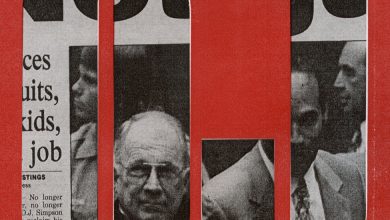I Thought We Learned Mandatory Minimums Don’t Solve Drug Epidemics

Stories of narcotics-related death and debasement flooded the media. Politicians stoked panic about marijuana. Parents feared that teenagers would tip into addiction. Congress held hearings.
“We need only to recall what we have read in the papers this past week to realize that more and more younger people are falling into the clutches of unscrupulous dope peddlers,” a representative insisted, urging passage of legislation imposing tough mandatory minimum sentences for drugs.
I might be describing events that occurred in the 1970s or 1980s, or even this year, as dozens of states and the federal government consider — and some enact — tougher penalties for users and sellers of fentanyl and its derivatives.
But the legislation mentioned here — the Boggs Act, named for Representative Hale Boggs of Louisiana — was signed into law by President Harry Truman in 1951. It remained on the books until 1970.
With the horror of some 100,000 annual overdose deaths in the 2020s, and the deadly nature of illegal synthetic drugs, it’s easy to think that imposing longer, tougher sentences might save lives by deterring sales. Some bereaved parents describe their children’s deaths as “poisonings” and want the government to treat fentanyl as a “weapon of mass destruction.” They demand that dealers be held to account with prison terms commensurate with murder, calling specifically for what are now labeled “drug-induced homicide” laws.
But the recent history of mandatory drug sentencing — nationally and in New York — holds crucial lessons for those who want to end today’s crisis of illegally manufactured fentanyl.
Already, some 30 states and the federal government allow for the prosecution of street fentanyl suppliers as murderers. And at least five require a mandatory life sentence. During the 2023 legislative season alone, fentanyl-related crime bills were introduced in 46 states. In Tennessee, for example, when three teenage girls overdosed in a high school parking lot this May, the 17-year-old sole survivor was charged with her classmates’ murder.
Parental fury is understandable. But the history of tough drug laws shows that they have never significantly reduced the drug supply, or lowered addiction rates or overdose deaths. In fact, drug busts may increase overdose risk while saddling addicted people with criminal records that lower their odds of recovery by making them less employable.
Our history of enacting — and then reforming — harsh mandatory drug sentencing legislation illustrates its failure.
Take the Boggs Act, which mandated two to five years for a first offense, five to 10 years for a second offense and 10 to 20 years for a third. It made no distinction between drug use and sales, or between marijuana and heroin. By 1955, however, lawmakers were already concerned that it wasn’t working, saying that the United States had the highest rate of addiction in the West — and blaming China for supplying heroin. They increased penalties in 1956. Still, drug use by teenagers and young adults continued rising. Indeed, what came next was the 1960s. About 90 percent of those who were born at the peak of the baby boom have at least experimented with illegal drugs.
Though by 1970 both parties agreed the Boggs Act had flopped, New York State’s moderate Republican governor, Nelson Rockefeller, didn’t take note of its ineffectiveness. In 1962, he had tried mandating lengthy periods of residential treatment for people with addiction. But in 1973 he reversed course. “In this state, we have allotted over $1 billion to every form of education against drugs and treatment of the addict through commitment, therapy and rehabilitation,” the governor said in his annual address to the legislature. “Let’s tell it like it is: We have achieved very little permanent rehabilitation and have found no cure.”
At the time, New York City was grappling with rising crime and increased heroin addiction, which rose with deindustrialization, social services cuts and the reduced tax base from so-called white flight.
The state legislature enacted what became known as the Rockefeller drug laws in 1973. They mandated a 15-years-to-life sentence, even on a first offense, for possession of four or more ounces or sales of two or more ounces of heroin, cocaine or marijuana. The sentencing was deliberately harsher than for rape or murder because drugs were seen as a crime against the whole community.
The laws did not reduce drug use or crime. Dealers began using children to run drugs in order to avoid these penalties. A 1978 study conducted by the Drug Abuse Council and the New York City Bar Association found no decrease in heroin use and no significant difference in other crime and drug-use rates compared with those in similar states. New York’s prison population more than quintupled from 1972 to 1992, to more than 60,000 from 12,000. Corrections spending rose to around 25 percent of the state’s general fund operations in the mid-1990s from 10 percent of the budget in the early 1980s.
By 1997, although Blacks and Latinos made up less than a quarter of the state’s population, they accounted for 94 percent of prisoners serving felony sentences for drug crimes. (The laws were amended to remove marijuana from the list of substances as early as 1979, when white college students started to face harsh penalties.)
By the mid-1980s, New York City had become one of the country’s main centers of crack cocaine use and distribution, with the murder rate peaking in 1990 at more than three times what it is now. Arrests rose, courts were clogged, and drug markets simply moved from one neighborhood to another or to sales via pager and phone when the heat got too high. Nearly half of Americans born in the early 1960s say they tried cocaine at least once. (I was one of them and I only narrowly escaped a 15-to-life term under the Rockefeller laws for selling it during my addiction, in part by luck and most likely in part because I was a white college student.)
Rockefeller’s crackdown had failed by every measure. And yet, despite all the evidence, Congress readopted mandatory minimum sentences for cocaine in 1986, imposing a five-year prison term for possession with intent to sell five grams of crack cocaine or 500 grams of powder cocaine. It toughened the law even more in 1988, with a 20-year maximum sentence permitted for even simple possession. Before this legislation passed, Black people sentenced for federal drug crimes served an average of 11 percent more time than whites; within four years, they were serving 49 percent more time.
New York repealed the Rockefeller drug laws in 2009. By that point there was again bipartisan agreement that mandatory minimums don’t work. In 2010, President Barack Obama signed a bill that reduced federal mandatories for new crack convictions. A second bill, which made the reform retroactive, was signed President Donald Trump in 2018.
Mandatory sentencing also failed to curb overdose deaths. In 1979, they began escalating exponentially, a trend that was not heeded until the deaths of white rural Americans from prescription opioids began skyrocketing in the early 2000s.
In response, the government prosecuted doctors who ran “pill mills” and threatened other physicians with prison time simply for prescribing opioids at higher rates than their colleagues. Most patients who lost access to medical opioids were provided no treatment, leading many who were addicted to turn to far more deadly street heroin.
And as dealers began adding cheaper and more potent fentanyl to the supply, the death toll worsened. Arrests didn’t help: A recent study published in the American Journal of Public Health found that within a week of a local drug bust, overdose deaths in the immediate area doubled, as former customers sought new supplies from unfamiliar sources.
Law enforcement simply can’t stop addiction. Confirming earlier data, a 2018 report by the Pew Charitable Trusts found that states with more drug arrests and incarceration don’t have less drug use. Indeed, the United States, with the highest rate of incarceration in the world, still has the world’s highest rates of illegal drug use, along with the highest rates of illegal-drug-related death and disability.
The pain of parents who have lost children to overdose is crushing. But doubling down on counterproductive policies is not the answer. We know what happens when we sentence dealers on a par with murderers — mass incarceration of Black and brown people, and unaltered and ongoing widespread availability of drugs and death.
This year is the 50th anniversary of the Rockefeller drug laws. The worst way to recognize that grim marker would be by continuing to impose more and tougher mandatory sentencing laws.
The Times is committed to publishing a diversity of letters to the editor. We’d like to hear what you think about this or any of our articles. Here are some tips. And here’s our email: [email protected].
Follow The New York Times Opinion section on Facebook, Twitter (@NYTopinion) and Instagram.



